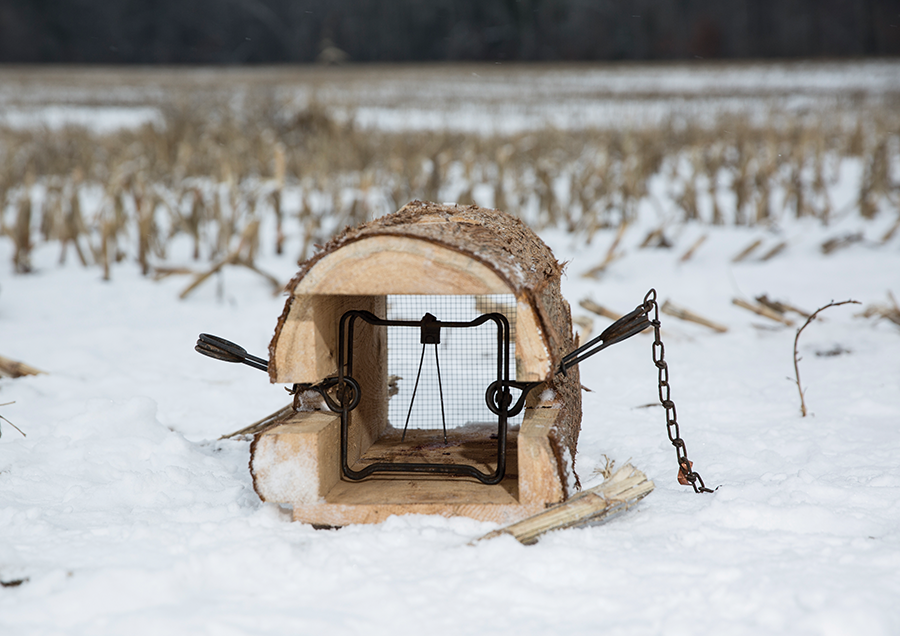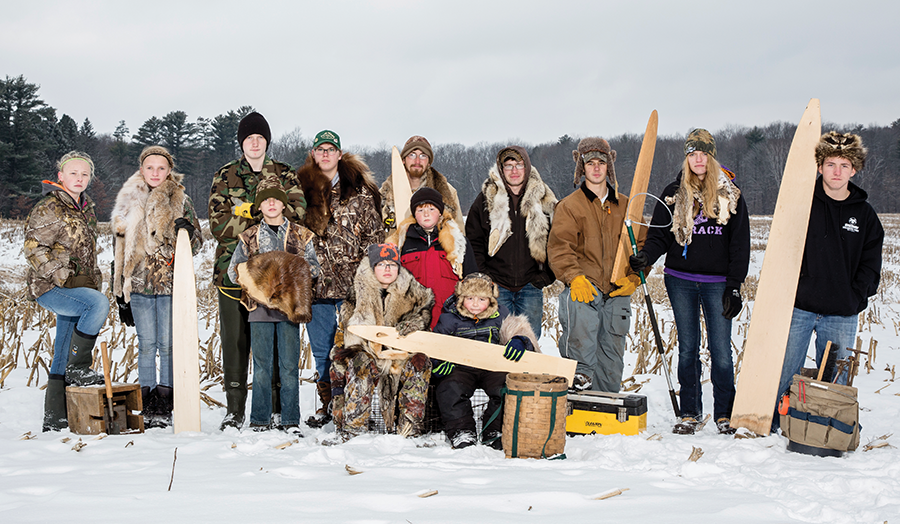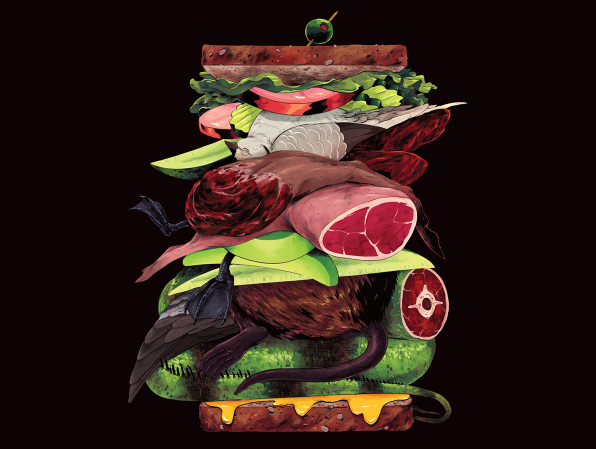Members of the no-name gang, with tools of the trapping trade, outside Shawano, Wisconsin, last november. Photographs by Ackerman + Gruber
At only 22 years old, Bill Porter is a trapper through and through. He has the scars, the fur, and the stories to prove it. One such story involves spending the night with a buddy in the back of a pickup with nothing more than a tarp separating them from the frigid Iowa night—all in the name of running a line.
Porter has other stories to tell. Stories about the loneliness of a kid who loves to trap. He doesn’t tell those stories as readily.
“Growing up, I had maybe one friend who was into trapping. I was ostracized because I wasn’t on the sports teams. But, man, there are so many things to do in the fall. There’s late-season fishing, hunting, trapping. Football just didn’t fit for me,” says Porter. “But high school kids say a lot of cruel things, and I probably heard them all. Having a group like the No-Name Gang gives kids like me a system of peers that understand and support what they do. It’s a family.”
This is the story of the No-Name Gang. It’s a tale of kids and trapping, and a program you’ve never heard of that aims to pass on the age-old skills of fur gathering to a brand-new generation.
Magic Beans
Kelsi Shumaker, 13, and Brookelynn Barnett, 16, are considered the queens of the dog-proof raccoon set, and the reason is simple: magic beans.
“Jellybeans and bacon grease,” Barnett says. “That’s what we call magic beans. We’ll sprinkle a few jellybeans around the trap and then put a couple in the trap and cover them with bacon grease.”
A Hands-On Education
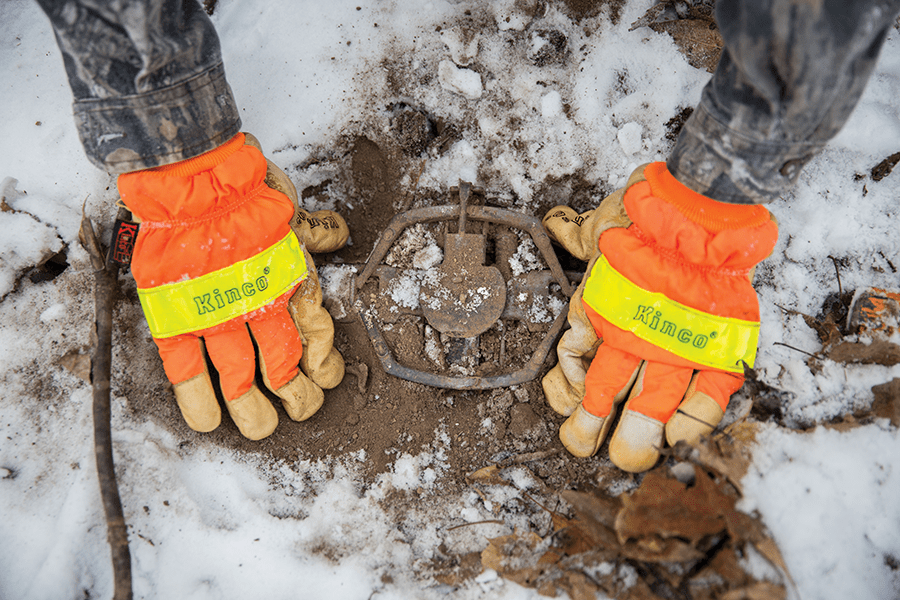
The No-Name Gang is really more of a camp held twice a year at different locations around Wisconsin. In June, the basic camp provides an introduction to trapping. Advanced trapping topics are covered during an August session.
“Our camps aren’t about sitting around and being told how to trap,” camp director Nicke Shumaker says. “We make them very hands-on. Everyone who goes to camp is going to get pinched by traps; they’re going to get their hands dirty. And the kids absolutely love it.”
Wyatt Bartman, 14, is one of them.
“You’re not just sitting there learning from a book,” he says. “You get the chance to physically do something, and that makes it a lot easier to learn and understand. We didn’t have any plans for the summer, and my dad heard about the trapping camp and asked me and my sister if we wanted to go. It was awesome.”
Noah Schmidt, 16, had minimal exposure to trapping prior to attending one of the No-Name Gang camps. But he left with a passion for the craft—enough that he felt compelled to write his instructors a two-page note of appreciation.
“I came to this camp and to trapping as a whole with just a trapper-education class under my belt and a few footholds,” he wrote. “But now my gear and knowledge have tripled, if not quadrupled.
“The firsthand experience on a trapline, experimenting with different types of sets and traps, has opened my mind to more than just blind and dirt-hole sets. Instead of just giving us the cable and wooden goods, you had us make them, teaching us the little tips that we are all sure to remember for all the years to come, making us just a bit more successful, a bit more ethical, and, in the end, better trappers.”

The camps are held in different locations in an effort to provide opportunities for young trappers from every corner of the state to attend. The cost per student is laughingly low: Just $100 per week, and that includes lodging, meals, instruction, and materials, plus any trapping supplies that donors provide.
During the weeklong experience, the kids will set their own traps and run their own lines. They decide which baits and lures to use and where to position their traps. If they catch something, they dispatch it themselves. They skin their catch, dress it, and prepare it as they would for a sale. Since the camps are held in the summer months, the furs aren’t prime.
“Yeah, it’s a little different,” says Shumaker. “But we’re able to get nuisance permits or special education permission on state land. Some years we catch a lot; others not as much. But the kids do it all. They kill what they catch unless it’s something we need to release, so they learn about releasing as well. They skin it. They learn how to trap by trapping. And that’s the best way to learn.”
Trap Care
Travis Bartman makes a fair living selling all manner of trapping supplies, including commercial dyes and dips for seasoning traps, in his shop. But he’s still a fan of tradition.
“Gather up some black walnuts, crack them, and put them in a kettle of boiling water,” he says. “That’s the old-school method for boiling and dipping your traps, and it works as well as anything you can buy. You can spend as much or as little on trapping as you want. It all depends on how much effort you want to invest. To me, raking up some walnuts is a little effort with a lot of reward.”
Quality traps will provide years of service, but only if you take care of them.
“Once the season is over, you need to get those traps cleaned up, dry them good, and store them in a clean, moisture-free area. A plastic tote works fine,” says Bartman.
“Cleaning the mud and dirt off them is important. And an easy, fast way to do that is in the dishwasher. I just have to wait until my wife is gone for a little bit to get it done. It works on the principle of ‘what she doesn’t know won’t hurt her.’”
The Evolution of a Gang

The camp got its start in 2010, when Shumaker was the trapper-education coordinator for the state of Wisconsin. Along with her husband, Dan, she was also a coordinator for the Future Trappers of Wisconsin program.
One of Shumaker’s first tasks was to create a youth camp that would give kids in-the-field experience and instruction in trapping.
“We were—and are—losing so many trappers each year, and the younger generations just weren’t replacing them,” she says. “We knew that unless there was some way to mentor kids, to teach them not only what trapping is about but how to really do it on their own, we were in trouble.”
The first FTW Camp, as it was called, was held in Poynette. It received financial support from the Wisconsin Department of Natural Resources, the WTA, and area sponsors, and drew nearly three dozen students. The program continued to grow in 2011 and 2012, adding the advanced camps to its schedule.
“Things were going very, very well. We were building something special,” Shumaker says.
And then things changed, though she wouldn’t say specifically what transpired. “There’s no point in that,” she says. “Politics. That’s all I really care to say about it.”
Shumaker resigned as statewide trapper-education coordinator, and she and Dan also resigned from their positions as FTW coordinators.
“We turned over the trailer, the equipment, the supplies—everything that we had worked so hard to acquire and build up for two years,” she says. “It was hard. But I knew this: We weren’t going to turn our backs on those kids.”

Word began to circulate that the Shumakers were interested in continuing with the trapping camp if they were able to fund it and had enough instructors to make it happen. Turns out, that wasn’t a problem.
“The Shumakers weren’t going to let that camp die, and the instructors were behind them all the way,” says Travis Bartman, a trapper-education instructor whose son, Wyatt, and daughter, Belle, are camp alums. “They’ve taken it from a camp to being a community, a family. Those kids aren’t just learning to trap, they’re making lifelong friends.”
In 2013, the camp returned. It was no longer affiliated with a formal organization, though, so funding was gone. But the Shumakers and their crew of volunteer instructors decided to try to make a go of it alone. The camp also had a new moniker: The No-Name Gang.
“We weren’t part of any parent group anymore. And we weren’t looking for any sort of special recognition,” says Shumaker. “Somehow that name just seemed to fit. The camps aren’t about making a statement or publicity. It’s about getting kids outdoors, teaching them about trapping, and helping them to become the people they want to be.
“We talk about the price of furs, but it’s not a money-making deal for most of them. What we’re trying to do is continue the trapping lifestyle, and we’re seeing that now with the season underway,” says Shumaker. “Tracking down the kids is tough, and it’s not because they have basketball practice or other school stuff. They’re out trapping.”
Trap Their Home
At age 16, Sara Shumaker has done something few have: trapped a wolf.
“Canines are my favorite thing to trap,” she says. “They’re challenging. You need to figure out where they live.”
Wolves, foxes, and coyotes often move in a circular route, passing through an area once every couple of days. But they usually have a home base they return to. Find it and you’re in business.
“That’s how we caught my wolf,” says Sara. “We found where that pack was staying. You want to look for well-used trails. If they’re living there, you’ll see plenty of tracks, sign, and maybe even gut piles from their kills.”
A Lasting Influence
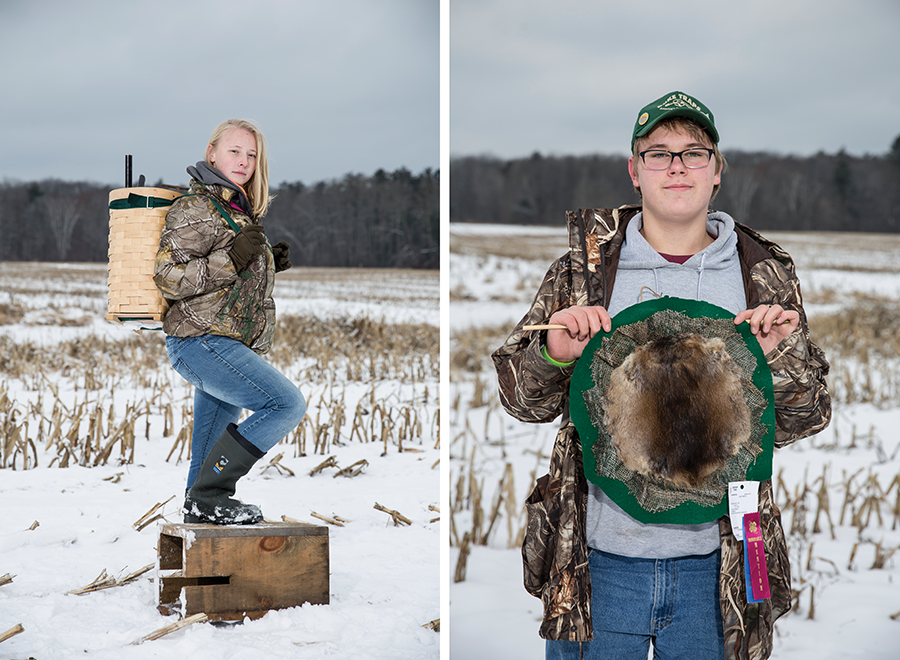
The impact of the camp is hard to deny. Just ask any of the kids who have attended.
“My dad is a trapper, and I’ve always been around it. But the No-Name Gang and the camp, I don’t know, they just made me feel like I really belonged and fit in with them,” says Brookelynn Barnett, a 16-year-old sophomore at Wild Lands Charter School in Fall Creek.
A 16-year-old girl who traps? Surely that would raise a few eyebrows in the halls at school. And it has—in a good way. “My school knows about the No-Name Gang, and I think they like the idea. I drew a wolf tag and I wanted to take a week off to try and trap my wolf,” says Barnett. “[School administrators] said I could as long as I turned it into a project. So I did a video that I edited. It didn’t turn out as good as I wanted it to, but I think people liked it.”
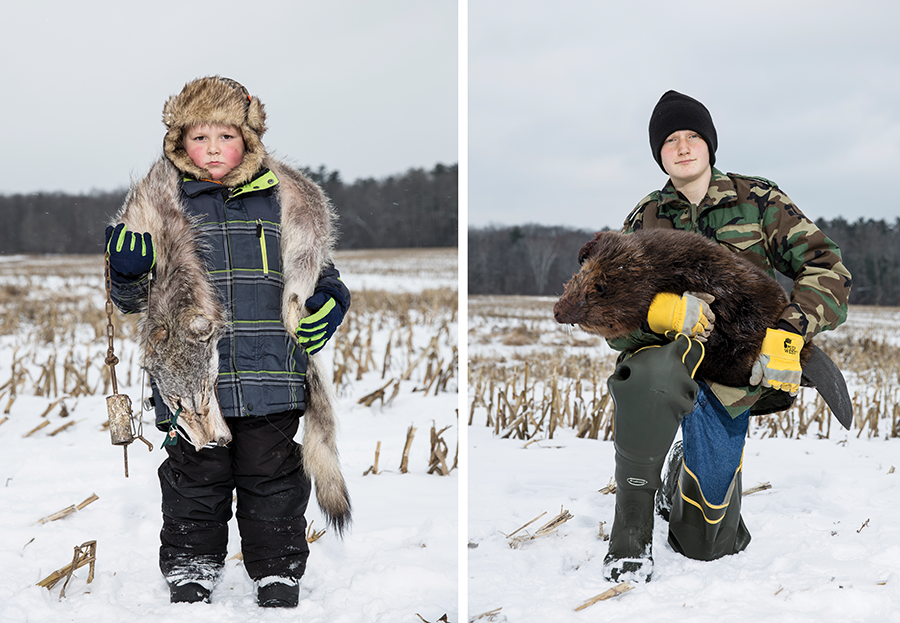
Not all of the kids in the No-Name Gang come from trapping families. In fact, the majority of those taking part were never exposed to the craft prior to their first day of camp.
“We’ve had autistic kids attend, and it’s great because trapping is something that you can do alone or with a very small group,” says Shumaker. “We’ve had kids with behavioral issues, and when they go home, their parents are like, ‘What did you do to my kid? He’s different now. He’s taking responsibility.’ And that’s what’s so great about trapping and the No-Name Gang. It teaches these kids about ethics and responsibility. And with today’s technology, those kids are able to stay in touch. They’re not alone anymore.”
The Shumakers intend to continue with the trapping camps and the No-Name Gang as long as possible. Each weeklong camp costs roughly $4,000 to run. The nominal tuition fee is supplemented by donations from local sponsors. But cash isn’t easy to come by.
“Is it tough? Yes,” Shumaker says. “But it’s also the right thing to do, and there’s nothing we’d rather do.”

Time Your Scents
Using a lure or scent can make a set more effective. Using the right lure or scent at the right time can make it even more so.
“You just want to think about the time of year and the situation you’re in,” says eighth-grader Wyatt Bartman. “Late in the season, when it’s cold and animals are probably hungry, a long-distance lure can be good. Early in the season, when there’s more food, a short-range lure might work better. Animals can get used to certain scents if there are a lot of people trapping, so don’t be afraid to try something different that they haven’t smelled before.”
